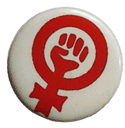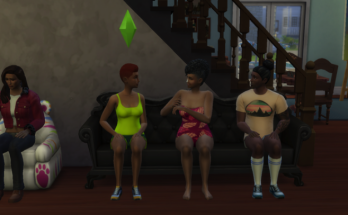By Hannah Adelstein
For this ethnography, I chose to research the Thinspiration/Pro-Ana/Pro-Mia community on Tumblr. Thinspiration blogs are meant to inspire women, and some men, to lose weight. Posts come in the form of photos, videos and written testimonies. The Thinspiration community exists on a shocking number of social networking platforms. In many cases these communities are made up of young teenaged girls who blog pictures of sickly skinny women and tips on how to lose weight. These include detailed instructions on how to fast, count calories and otherwise maintain an unhealthy lifestyle.
The first time I came upon a Thinspiration blog, it disturbed and upset me but for some reason I could not stop reading. Its morbidity fascinated me. I combed the internet, looking for more information. Last year there was a controversy over Tumblr and Pinterest’s attempts to remove all Thinspiration content from their servers. Their censorship was relatively unsuccessful and the communities still continue to thrive on both platforms.
The Thinspiration community is primarily made up of women, but it would be a stretch to classify it as feminist. On the surface, it is a supportive community where the participants seem to be concerned with the wellbeing of one another. I’ve seen many Thinspiration bloggers offer to counsel others who have problems, questions, or concerns on their journey to thinness. They constantly reassure each other that they are not alone. However, these same bloggers who are quick to extend a hand to help others are always posting self-hatred and self-criticism. When you examine the goals of the community, to encourage unhealthy thinness, it is clear that this space can be very detrimental to readers’ mental and physical health. The Thinspiration community can have an especially negative impact on the young, impressionable women who occupy this space.
Thinspiration blogs promote an unrealistic and unhealthy ideal of body image. The standard of beauty these blogs applaud are an extension of mainstream society’s, which we know is patriarchal and hetero-normative. For those who don’t have the Thinspiration community’s model body type, these blogs promote feelings of self-hate and actions of self-harm. I have discovered many Thinspiration blogs that double as self-harm blogs.
As a woman involved in this community, I feel incredibly unsafe. I do not look anything like the pictures that are posted, and I would never starve myself, like the girls I follow do. Many girls post their highest weight, their lowest weight and their ultimate goal weight. I would NEVER feel comfortable posting my weight in this community, as I feel I’d be rejected immediately. There is a lot of fat-shaming that goes on in the Tumblr Thinspiration community. Much of it is self-hatred, but I have witnessed some vicious fat-shaming of random people who aren’t even involved in the community. For the most part, the girls they are attacking aren’t even really over weight, they just don’t have thighs that don’t touch or ribs that stick out of their bodies. There is an illusion of safety for women in the Thinspiration community because women constitute its majority. However, it seems that if you are not on the same page as the others you will be shunned, attacked, or rejected.
Another community exists on Tumblr involving body image. This community is widely referred to as the “Body Acceptance” community. This consists of a collection of blogs that openly and actively celebrate all body types. In conducting my research, I contacted a “queer body acceptance” blogger named Jessica, and asked her some questions about the Tumblr community. I found Jessica’s blog about two years ago. It is called Tangled up in Lace. In her “about” section, she describes herself as a “high-femme fatty who bleeds glitter and kittens in lace bonnets.” She informs her followers that she posts on topics of “self-acceptance, being queer, examining my whiteness, loving and worshiping my femininity and dreaming big.” For three years now she has been a total inspiration to me. She posts interesting and accessible material that has always been both uplifting and informative. A bright light in the dark tunnel of the Thinspiration blogosphere, she is who brought me into the body acceptance community. As a queer woman, Jessica’s specific perspective is definitely important to the nature of this project. The first question I asked her was, how she thought queer bloggers fit into the Tumblr community. After doing a lot of research in both the ‘Thinspiration’ and ‘body acceptance’ community, I’ve definitely noticed an imbalance. There seem to be a fair amount of body acceptance bloggers that identify as queer, but in the ‘Thinspiration’ community, I’ve only encountered one blogger that identifies as queer. Jessica explained,
“I think by and large, Tumblr is a mostly queer space. But that’s the beauty of Tumblr. Every user has a completely different experience and exposure to the site. Because I’m fat and queer, my general understanding of Tumblr is that it can be a body acceptance tool full of queers! I know that in many cases its not, but everyone I follow generally fits into either of those categories and generally the same can be said about the people who follow me. I would say that queer bodies are under attach beyond its fatness already so perhaps the reason Thinspiration lacks queers is part of fighting the patriarchy and heteronormativity is challenging diet culture and the religion of thinness. However, I do believe there is a lot of unchecked fatphobia in many queer spaces.”
I was also curious if Jessica found Tumblr to be a safe space for queer women.
“I don’t actually believe in the idea of safe spaces. You will find that even in spaces that promise safety, some people continue to commit acts of violence against their community members. I do believe in safe spaces that promise accountability, communication and support and I think that Tumblr has the potential to provide a lot of that but still it fails people. Communication can become very easily muddled on Tumblr as it takes a lot of work to follow everything said. At times it mirrors a game of telephone, with people jumping in and out of conversations. They join and drop out at different offshoots but expect everyone to be where they are in the conversation. I also think Tumblr tends to keep a lot of people in the rage part of their consciousness rather than the healing, as the power of ‘mob mentality’ is strong on Tumblr. I think queer bloggers could find a lot of healing and strength in body acceptance/body politics as everyone’s (queer or straight) bodies are constantly under attack in a patriarchal society and fighting oppressive body practices is inherently tearing down homophobia as well. Queering bodies means the end of diet culture and constant minimizing to please the patriarchy. “
The Tumblr Thinspiration community disguises itself as a supportive community. Members of this tight-knit community urge each other to ask for advice and counsel. They want to support you in your journey to become thin. Unfortunately, these blogs encourage unhealthy habits and reinforce an unhealthy body image to a very vulnerable audience, made up primarily of young girls. It also is not a safe space because of its exclusivity. This community will be as accepting and supportive as you need it to be unless you aren’t already or actively trying to fit into their strict standards of beauty.


I really loved your ethnography and the detail you put into your writing. I have had similar experiences on the Craigslist Queer Forum. People would initiate political and thought provoking conversations that represented feminist values but the threads would just become vicious attacks. It’s weird how these attacks are becoming the norm in spaces where people are made to feel comfortable. Violence as a technology
?
Hannah: Your nuancing of three sorts of Tumblr spaces–a place for women, a place for feminists, a place that is supportive–is quite useful. And Leo’s ethnography and yours are similar in their structural tension between support/attack. In this regard, Jessica’s responses are quite informative.